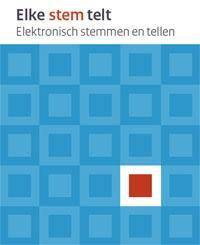Investigation into voting printer and scanner specifications
The Minister of the Interior and Kingdom Relations, Mr Ronald Plasterk, still believes the voting and vote counting processes will benefit from the introduction of voting printers and scanners. He repeated this position in his letter to the House of Representatives issued in response to the answers provided by the Van Beek Committee to his additional questions on electronic voting and vote counting. Minister Plasterk does note in his letter that the implementation of these IT systems "involves complex issues and is fraught with unknowns". That is why the Minister's main plan is to detail specifications to be met by voting printers and scanners. The Minister announced that for this purpose, a group of internal and external experts will be involved, with relevant expertise in the area of IT and public administration.

The Electoral Council is positive about the fact that the Minister continues to explore the options for introducing electronic voting and vote counting, and looks forward to the results of the further investigation. The Minister has promised to inform the House of Representatives of the progress by the end of May.
Electronic voting and vote counting models
In late 2013, the Van Beek Committee had compared the advantages and disadvantages of four voting and vote counting process models in its report 'Every vote counts. Electronic voting and vote counting' [in Dutch: 'Elke stem telt. Elektronisch stemmen en tellen']. The Committee preferred a combination of a voting printer and scanner (2nd option in the report). In his response to this report, the Minister had indicated that he saw the advantages of this option, but had asked the Committee to conduct further investigation into a number of points. The Committee recently provided the Minister with the answers to these questions.
Preferred option
The Electoral Council supports the introduction of electronic voting and vote counting equipment. During the presentation of the Van Beek Committee's report, the Electoral Council indicated that it agrees with the Committee on the preferred option: the introduction of a voting printer and scanner. The Council believes that the advantages of this option are: promoting the reliability and speed of the voting process, and also its accessibility, especially for visually impaired voters. The Electoral Council did place some comments to the requirements set on this option by the Committee. It was noted that model 3 – only electronic vote counting with a new ballot paper model – would be an acceptable fall-back option, if model 2 would appear to be infeasible.